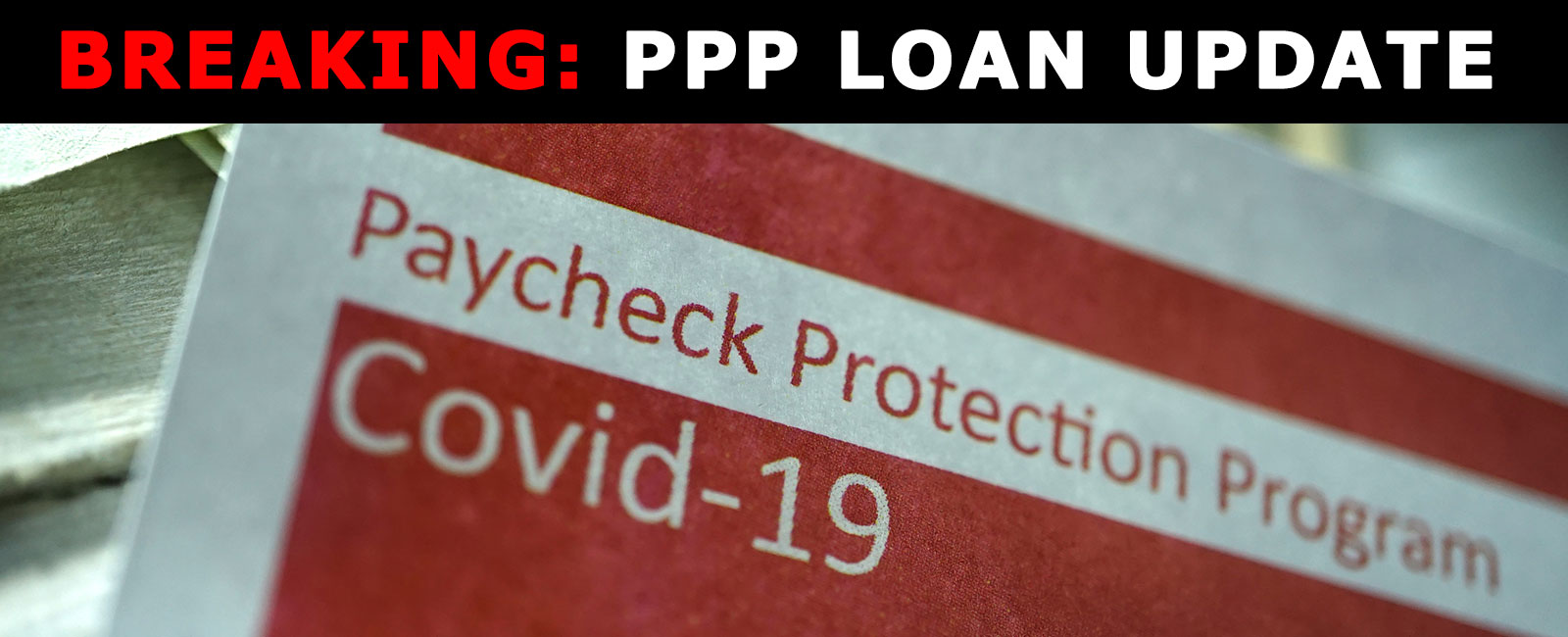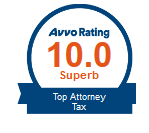Paycheck Protection Program Changes Are Here!
On March 27, 2020 President Trump signed the $2 trillion Stimulus Bill formally known as the Coronavirus Aid, Relief and Economic Security [CARES] Act (the “CARES Act”) to provide assistance to workplaces and employees. The CARES Act provides many benefits intended to deliver cash into the hands of individuals and businesses, as well as many other tax provisions. One of the most publicized provisions is the access of funds through banks to qualifying businesses and self-employed taxpayers to pay for payroll, insurance premiums and mortgage, rent and utility payments. This is known as the “Paycheck Protection Program” (PPP).
Under this program, small businesses with 500 or fewer employees including not-for-profits, veterans’ organizations, tribal concerns, self-employed individuals, sole proprietorships, and independent contractors are eligible for loans to pay up to eight weeks of payroll costs including benefits as well as other costs. The PPP launched in early April with $349 billion in funding that was exhausted in less than two weeks. Congress then provided an additional $310 billion in funding.
However, there has been criticism of this program as many businesses have been subject to continued lockdown orders preventing them to achieve loan forgiveness within the original 8-week timeframe, and businesses located in metropolitan areas with higher-than-average rent expenses who would have greater difficulty achieving loan forgiveness within the pre-existing terms of PPPP. So on June 5, 2020 President Trump signed the Paycheck Protection Flexibility Act which makes it easier for businesses to secure the full benefits provided in this program.
What can PPP funds be used to pay?
PPP funds can be used to pay payroll costs including benefits (with salaries being under $100,000 per employee), interest on mortgages, rent payments, and utility bills; however, no more than 40% (was previously 25%) of the funds can be used for non-payroll costs.
What counts as payroll costs?
- Salary, wages, commissions, or tips (capped at $100,000 on an annualized basis for each employee);
- Employee benefits including costs for vacation, parental, family, medical, or sick leave; allowance for separation or dismissal; payments required for the provisions of group health care benefits including insurance premiums; and payment of any retirement benefit;
- State and local taxes assessed on compensation; and
- For a sole proprietor or independent contractor: wages, commissions, income, or net earnings from self-employment, capped at $100,000 on an annualized basis for each employee.
What counts as non-payroll costs?
- Interest on mortgage obligations, incurred before February 15, 2020;
- Rent, under lease agreements in force before February 15, 2020; and
- Utilities, for which service began before February 15, 2020.
Under what circumstances do I have to repay these PPP funds received?
The loan of the PPP funds will be forgiven if you maintain your pre-existing employees at their pre-existing salary levels. Also, that you do not pay out more than 40% (was previously 25%) of the PPP funds for non-payroll costs specifically limited to: interest on mortgages, rent, and utilities.
How soon can one apply?
Starting April 3, 2020, small businesses and sole proprietorships affected by the coronavirus pandemic can apply for loans under the PPP. Independent contractors and self-employed individuals can apply starting April 10, 2020. The application period ends June 30, 2020.
Where do I apply?
The application can be found here on the United States Treasury website, along with details for borrowers and lenders. After completing the application, you would then go to any existing SBA lender or through any federally insured depository institution, federally insured credit union, and Farm Credit System institution that is participating. Other regulated lenders will be available to make these loans once they are approved and enrolled in the program. You should consult with your local lender as to whether it is participating. Visit www.sba.gov for a list of SBA lenders.
How large can my loan be?
Loans can be for up to two months of your average monthly payroll costs from the last year plus an additional 25% of that amount. That amount is subject to a $10 million cap. If you are a seasonal or new business, you will use different applicable time periods for your calculation. Payroll costs will be capped at $100,000 annualized for each employee.
How many loans can I take out under PPP?
Only one.
Are there any charges or requirements for collateral or personal guarantees?
No collateral or personal guarantees are required. Neither the government nor lenders will charge small businesses any fees.
What if I do not spend all the funds or make non-qualifying expenditures?
The amount of loan forgiveness will be reduced including if full-time headcount declines or if salaries and wages decrease. Also, if you use the loan amount for anything other than payroll costs, mortgage interest, rent, and utilities payments over the 24 weeks (was previously 8 weeks) after getting the loan. Current PPP borrowers who applied before June 5, 2020 can keep the original eight-week period if they choose not to extend the period to 24 weeks.
Do I need to restore workforce levels and wages to pre-pandemic levels?
Yes, but borrowers can use the 24-week period to restore their workforce levels and wages to the pre-pandemic levels in order to apply for full forgiveness. This must be done by December 31, 2020 (was previously June 30th).
Are there any exceptions to secure loan forgiveness if not fully restoring workforce levels?
Yes, there are two new exceptions allowing borrowers to achieve full PPP loan forgiveness even if they don’t fully restore their workforce.
- Previous guidance already allowed borrowers to exclude from those calculations employees who turned down good faith offers to be rehired at the same hours and wages as before the pandemic.
- The new law allows borrowers to adjust because they could not find qualified employees or were unable to restore business operations to February 15, 2020, levels due to COVID-19 related operating restrictions.
How can I request loan forgiveness?
You can submit a request to the lender that is servicing the loan. The request will include documents that verify the number of full-time equivalent employees and pay rates, as well as the payments on eligible mortgage, lease, and utility obligations. You must certify that the documents are true and that you used the forgiveness amount to keep employees and make eligible mortgage interest, rent, and utility payments.
Can I appeal a decision by the lender denying loan forgiveness?
Yes.
What is my interest rate?
1% fixed rate.
When do I need to start paying interest on my loan?
Unless the loan is forgiven, all payments are deferred for 10 months (was previously 6 months) after the end of the covered period; however, interest will continue to accrue over this period.
When is my loan due?
In 5 years (was previously 2 years). Current PPP borrowers who applied before June 5, 2020 can keep the original 2-year period if they choose not to extend the period to 5 years.
Can I pay my loan earlier than 5 years?
Yes. There are no prepayment penalties or fees.
Can I delay payment of payroll taxes as provided under the CARES Act?
Yes (was previously no). The CARES Act provides for a deferral of the employer’s share of payroll taxes for the period beginning on March 27, 2020 to January 1, 2021.
What Should You Do?
Let the attorneys at the Law Offices Of Jeffrey B. Kahn, P.C. located in Orange County (Irvine), Los Angeles (including Long Beach and Ontario) and elsewhere in California assist you in securing the maximum amount of financing allowed and to maximize the amount of loan forgiveness. Also if you are involved in cannabis, check out what a cannabis tax attorney can do for you. And if you are involved in crypto currency, check out what a bitcoin tax attorney can do for you.




